
The Scrophulariaceae are a family of flowering plants, commonly known as the figwort family. The plants are annual and perennial herbs, as well as shrubs. Flowers have bilateral (zygomorphic) or rarely radial (actinomorphic) symmetry. The Scrophulariaceae have a cosmopolitan distribution, with the majority found in temperate areas, including tropical mountains. The family name is based on the name of the included genus Scrophularia L.

The Aristolochiaceae are a family, the birthwort family, of flowering plants with seven genera and about 400 known species belonging to the order Piperales. The type genus is Aristolochia L.

The Juglandaceae are a plant family known as the walnut family. They are trees, or sometimes shrubs, in the order Fagales. Members of this family are native to the Americas, Eurasia, and Southeast Asia.

The Aizoaceae, or fig-marigold family, is a large family of dicotyledonous flowering plants containing 135 genera and about 1800 species. They are commonly known as ice plants or carpet weeds. They are often called vygies in South Africa and New Zealand. Highly succulent species that resemble stones are sometimes called mesembs.
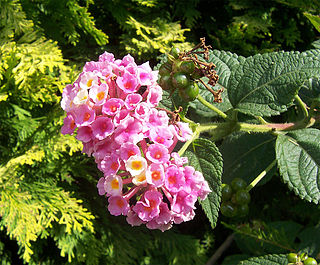
The Verbenaceae, the verbena family or vervain family, is a family of mainly tropical flowering plants. It contains trees, shrubs, and herbs notable for heads, spikes, or clusters of small flowers, many of which have an aromatic smell.

The Passifloraceae are a family of flowering plants, containing about 750 species classified in around 27 genera.
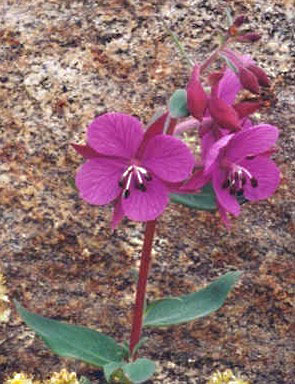
The Onagraceae are a family of flowering plants known as the willowherb family or evening primrose family. They include about 650 species of herbs, shrubs, and trees in 17 genera. The family is widespread, occurring on every continent from boreal to tropical regions.

Paulowniaceae are a family of flowering plants within the Lamiales. They are a monophyletic and monogeneric family of trees with currently 7 confirmed species. They were formerly placed within Scrophulariaceae sensu lato, or as a segregate of the Bignoniaceae.

Phrymaceae, also known as the lopseed family, is a small family of flowering plants in the order Lamiales. It has a nearly cosmopolitan distribution, but is concentrated in two centers of diversity, one in Australia, the other in western North America. Members of this family occur in diverse habitats, including deserts, river banks and mountains.

Nyctaginaceae, the four o'clock family, is a family of around 33 genera and 290 species of flowering plants, widely distributed in tropical and subtropical regions, with a few representatives in temperate regions. The family has a distinctive fruit type called an accessory fruit or anthocarp, and many genera have extremely large pollen grains.
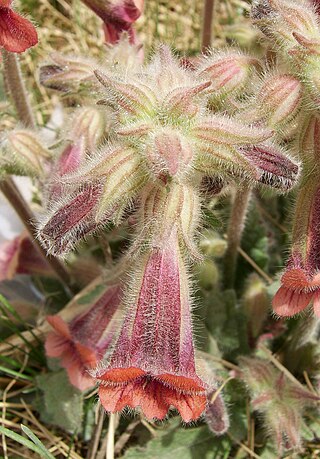
Rehmannia is a genus of seven species of flowering plants in the order Lamiales and family Orobanchaceae, endemic to China. It has been placed as the only member of the monotypic tribe Rehmannieae, but molecular phylogenetic studies suggest that it forms a clade with Triaenophora. Contrary to the immense majority of the taxa of Orobanchaceae, Rehmannia is not parasitic.

Capraria is a genus of flowering plants in the family Scrophulariaceae. It is sometimes placed in the families Gratiolaceae, Plantaginaceae, or Veronicaceae. The name is derived from the Latin word caprarius, meaning "pertaining to goats." This refers to goats being one of the few herbivores that will graze on the plants.
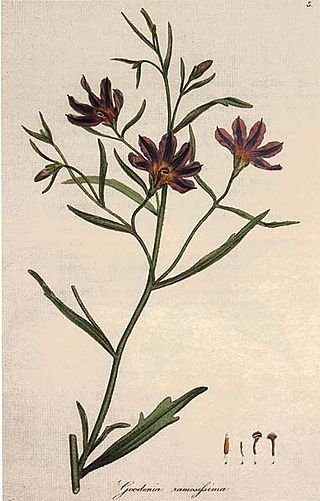
Goodeniaceae is a family of flowering plants in the order Asterales. It contains about 404 species in twelve genera. The family is distributed mostly in Australia, except for the genus Scaevola, which is pantropical. Its species are found across most of Australia, being especially common in arid and semi-arid climates.

Linderniaceae is a family of flowering plants in the order Lamiales, which consists of about 25 genera and 265 species occurring worldwide. Vandellia micrantha is eaten in Laos, but tastes bitter. Best known are the wishbone flowers Torenia fournieri and Torenia thouarsii, which are used as bedding plants, especially in the tropics. Micranthemum is sold as an aquarium plant when it is called 'baby tears'.

Tetrachondraceae is a plant family in the order Lamiales. The family contains the two genera Polypremum and Tetrachondra, which together comprise the three species:

Helicteroideae is a subfamily of the family Malvaceae. Some taxonomists place genera in Helicteroideae in distinct families Durionaceae and Helicteraceae, while others recognizes the tribes Durioneae and Helictereae.
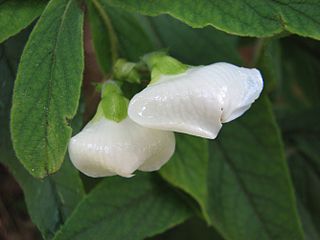
Stilbaceae is a family of flowering plants in the order Lamiales.
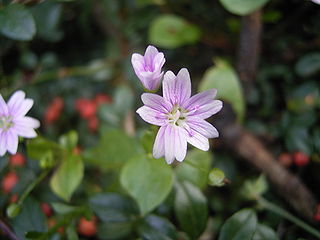
Montiaceae are a family of flowering plants, comprising about 14 genera with about 230 known species, ranging from small herbaceous plants to shrubs. The family has a cosmopolitan distribution.

The Antirrhineae are one of the 12 tribes of the family Plantaginaceae. It contains the toadflax relatives, such as snapdragons.
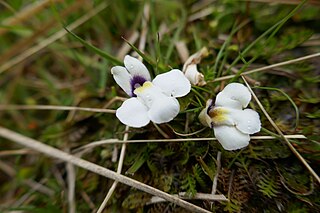
Mazaceae is a family of plants in the order Lamiales. The family was described by James L. Reveal in 2011. Genera in this family were most recently previously included in Phrymaceae and in older classifications were placed in Scrophulariaceae.






















